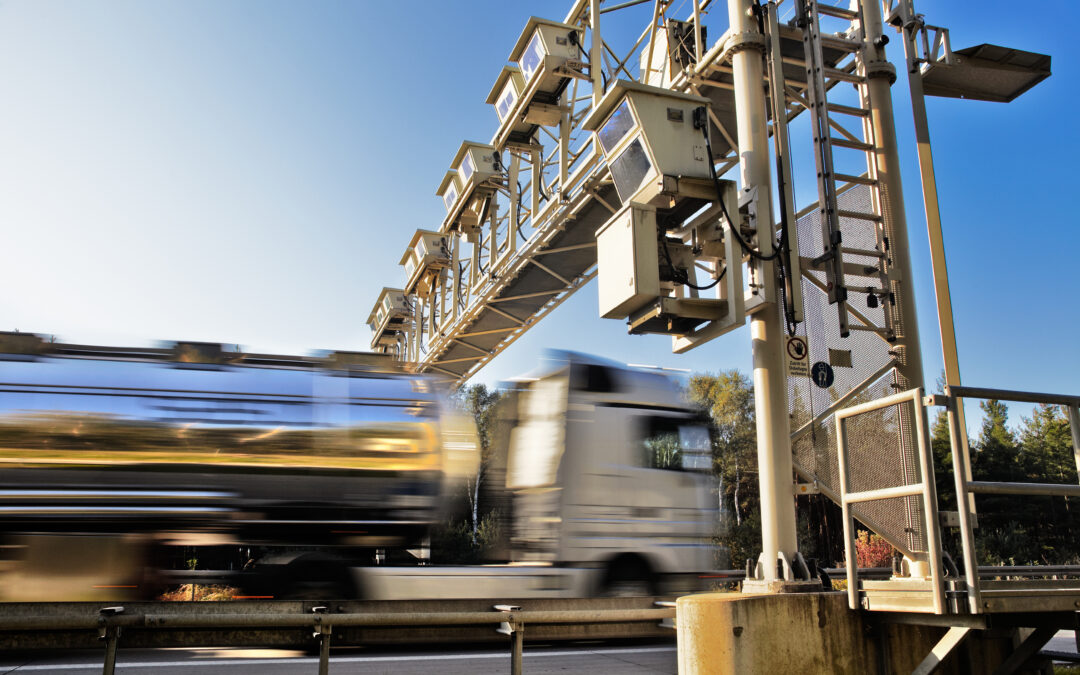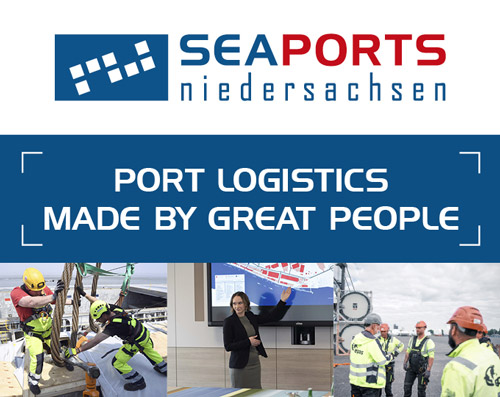The heavy goods vehicle toll, imposed as a means to accelerate the transition to climate-neutral drive systems, has been linked to CO2 emission levels since 1 December 2023. Jürgen Resch, Federal Managing Director of Environmental Action Germany (DUH), and Simeon Breuer, Managing Director of L.I.T Speditions GmbH, assess this plan from different perspectives.
Resch:
Alongside other initiatives, the expansion of the HGV toll is an important first step in driving forward the decarbonisation of road freight transport and a greater shift towards rail. Adding the CO₂ element to the toll is a response to the fact that freight transport must also play its part in achieving binding climate protection targets in the transport sector. At the same time, it’s clear that this measure alone won’t be enough to overcome the climate protection shortfall in the industry.Breuer: No. There are no real incentives to invest in intermodal transport or alternative engine types. Of course, we ourselves are looking at how we can promote intermodal transport, i.e. getting more freight onto the railway. Indeed, we already operate two entire trains ourselves, which take 100 lorries off the road every day. In future, we’d also like to be more active in this sector by loading individual trailers by train. Germany’s deteriorating rail infrastructure is a limiting factor here, though. There’s no question that the issue of decarbonisation must be promoted, but we feel that the German government isn’t creating any incentive with this toll increase.
Does linking the toll to CO2 emissions create an incentive for the industry to switch to eco-friendly vehicles?
Resch: It constitutes an additional incentive to switch to battery-electric drives and to shift to rail transport. The cost advantage of e-trucks currently lies in the operating costs. Over the next few years, their cost advantage will increase, and from around 2025 – purchase premiums notwithstanding – they’ll reach cost parity with internal combustion engine lorries. A study by our umbrella organisation Transport & Environment suggests that electric lorries will have lower overall costs in 99.6 per cent of applications in European road freight transport from 2030, while meeting the same requirements in terms of range, running time and payload. This applies from 16-tonne distribution lorries to 40-tonne long-distance lorries. The toll extension increases the cost advantage for e-trucks and can therefore be an additional incentive. However, we believe that permanently exempting e-trucks from all toll components isn’t the way to go, as battery-powered lorries can also have a negative impact on the environment and place a burden on infrastructure.
Breuer: In principle, yes, even if there are no real alternatives that can be universally implemented. LNG lorries are already a first step. There is also a good network of refuelling stations, but the war in Ukraine has sent LNG prices through the roof. LNG lorries were previously exempt from the toll, but they will also have to pay it in full from January. I think that’s unfair because the war has made conditions very difficult. LNG lorries contribute to decarbonisation, at least as a first step. The German government should at least take this into account when implementing tolls. We now have a subsidised project for two hydrogen trucks, but when you look at the current hydrogen prices, you’ll see they’re off the charts. I currently pay between eight and twelve euros for a kilo of hydrogen. We intend to do something about that, but even that’s difficult to achieve economically.
Who do you see as the winners and losers under the new regulation? Will the new HGV toll also have an impact on consumers?
Resch: The introduction of a CO₂ element is a response to the fact that road freight transport accounts for a significant proportion of the sector’s climate-damaging emissions. So far, the sector hasn’t been able to meet climate protection targets, which is why we submitted a successful case for a climate protection programme for immediate implementation before the Berlin-Brandenburg administrative appeals tribunal. Accordingly, the CO₂ element is also part of the German government’s climate protection programme, which makes the climate the most likely winner. At the same time, the CO₂ element is a step towards ending road transportation as the favoured method. The HGV toll applies to motorways and major national roads – in rail transport, the network charge must be paid on all routes. The transport costs of goods, and the toll is only part of it, generally only account for a low single-digit percentage of the selling price. I don’t think the toll increase will have any impact on the prices of consumer goods.
Breuer: E-mobility and intermodal transport are certainly seeing increased demand, even if they can’t be used for many transport operations. This will definitely have an impact on the end consumer. Many companies are downsizing their vehicle fleets or are even considering stopping altogether because optimising their truck capacity, including drivers, is a battle they’re fighting daily. Some are unable to cope with this additional cost increase. If this happens, we’ll also see it on supermarket shelves, either through reduced product availability or rising prices.

“Road transport contributes significantly to climate-damaging emissions.”
Jürgen Resch has been Federal Managing Director of Environmental Action Germany (DUH) since 1988 and was instrumental in uncovering the emissions scandal.
Resch:
As regards freight transport, of course, the development of an adequate and efficient charging infrastructure is an important element when switching to battery-electric drives. However, expanding and electrifying rail transport is also crucial to create additional capacity. For this purpose, a rail freight transport master plan, which has been agreed with the relevant associations, has been drawn up and must now be implemented. We mustn’t delay any more.Breuer: The railway infrastructure and e-truck charging facilities are urgently needed and must be made quickly. The shift must be worthwhile for freight forwarders, which is why all types of traffic that results in lower CO₂ emissions should be cheaper to undertake. Forwarders must also be held accountable here. At the moment, however, only the price seems to play a role. (bre)

“The German government isn’t creating any incentive with this toll increase.”
Simeon Breuer has been Managing Director of L.I.T.Speditions GmbH and member of the L.I.T. AG Executive Board since 2020.









